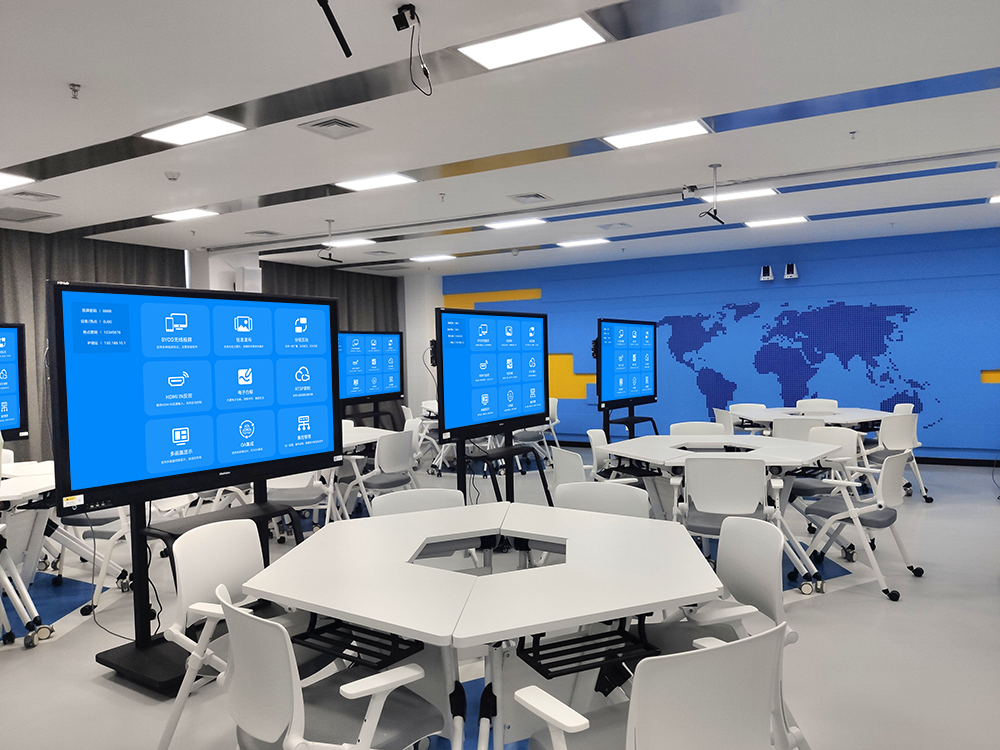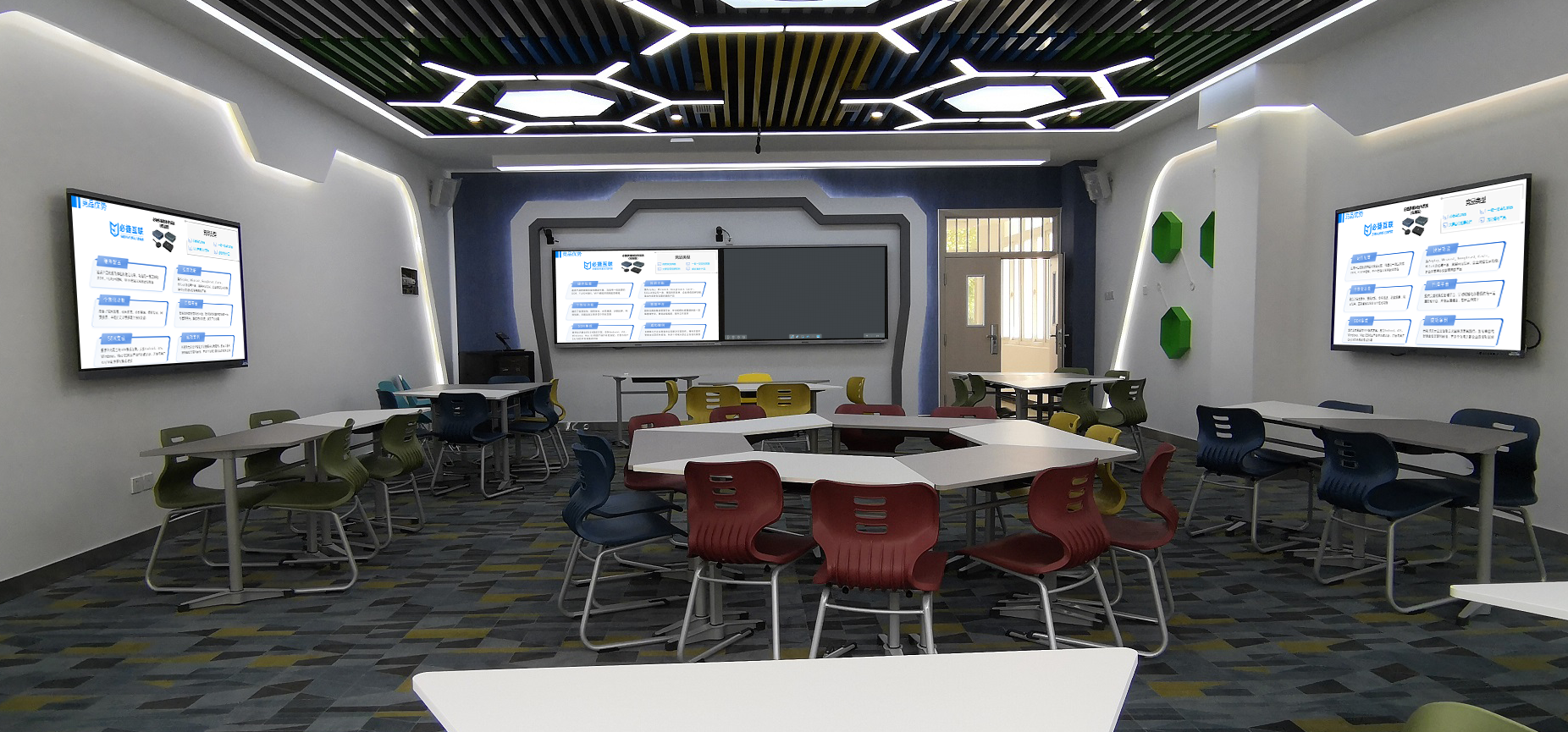Smart Classrooms: A Teaching Solution with Phone Screen Mirroring
The efficiency of a smart classroom depends on the flexible flow of content. The integration of phone screen mirroring with a smart classroom, supported by Bijie’s mirroring devices, allows a teacher’s teaching materials and a student’s work to be displayed on a large screen at any time. This shifts classroom interaction from a one-way lecture to a two-way linkage, reshaping the interactive model of smart education.
All-Scenario Mirroring for On-Demand Teaching Content
Bijie’s mirroring devices are deeply embedded in the smart classroom system. Teachers’ phones can connect to the main classroom screen in 3 seconds without complicated setup, whether they use “Screen Mirroring” on iOS or “Wireless Projection” on Android, a QR code scan, or NFC tap-to-connect. Even older phone models can mirror content stably. A phone that stores years of teaching courseware can mirror content without lag, and the audio-visual synchronization error is controlled to be within 20ms, preventing teaching rhythm from being interrupted by device problems.
In class, a teacher can film whiteboard drafts with their phone and instantly mirror them to the large screen so the whole class can see clearly. When demonstrating an experiment, the phone can be pointed at the lab bench for real-time mirroring. The details of the reagent changing color or the instrument operating are clearly displayed on the large screen, so students in the back can observe accurately. If a teacher wants to add some extra information, they can simply search for a relevant image or short video on their phone and mirror it directly, without having to switch computer courseware, making the teaching rhythm more continuous.
Two-Way Interaction for Deeper Classroom Participation
With the two-way interactive function of Bijie’s mirroring devices, the smart classroom’s large screen can control the mirrored phone content in reverse. A teacher can tap the large screen to turn pages of the courseware on their phone or zoom in on a mirrored photo of an experiment. When students submit their homework via phone mirroring, a teacher can directly circle and annotate it on the large screen. The changes are synchronized back to the student’s phone in real time, which increases grading efficiency by 50% because there’s no need to check each terminal individually.
Students can also become the ones initiating the mirroring. After a group discussion, each member can use their phone to mirror their group’s mind map or creative proposal. The smart classroom’s split-screen function can simultaneously display content from 3-4 groups, allowing the whole class to compare and comment. If a student finds a new way to solve a problem, they can film their draft with their phone and mirror it for sharing. Other students can get an electronic version by scanning a QR code with their phones, which is convenient for organizing notes after class. The classroom’s interactive participation increases by 40%.
Resource Linkage and Reuse for Upgraded Teaching Efficiency
Bijie’s mirroring devices enable a seamless link between phone mirroring and the smart classroom’s resource system. The courseware a teacher mirrors from their phone is automatically synchronized to the classroom’s resource library. After class, students can retrieve the mirrored courseware with annotations for review by scanning a QR code. The experimental videos filmed and mirrored from phones in class are saved to the resource library in real time, and subsequent classes can directly retrieve and mirror them, reducing the workload of repeating demonstrations.
For special teaching scenarios, it also supports “directed mirroring.” A teacher can select a specific student’s terminal on their phone, and the key knowledge points they’re mirroring are only pushed to that student’s tablet, allowing for personalized tutoring. During group work, the task list a teacher mirrors from their phone is only displayed on the corresponding group’s screen, so each group can focus on completing their own task, and teaching management is more precise.
Scenario-Based Teaching Adaptation for Diverse Needs
Theoretical Classroom Scenarios
When explaining an abstract knowledge point, a teacher can use their phone to mirror a dynamic demonstration animation, such as the movement of celestial bodies in physics or cell division in biology. The intuitive dynamic image on the large screen makes abstract concepts tangible. Students can use their phones to mirror their notes with questions, and the teacher can explain them on the spot based on the mirrored content, increasing knowledge absorption by 30%.
Experimental Teaching Scenarios
In a lab classroom, students can film their experimental process with their phones and mirror it. The teacher can observe it in real time on the large screen and correct operational problems on the spot. When multiple groups are performing experiments at the same time, the smart classroom’s multi-screen function can display each group’s mirrored footage simultaneously. The teacher can switch between screens at any time while walking around, making guidance more comprehensive.
Group Discussion Scenarios
When conducting project-based learning, each group can use their phones to mirror their discussion results. The main screen of the smart classroom displays the content side by side in a split-screen view for inter-group commentary. A teacher can use their phone to annotate each group’s highlights and areas for improvement, and mirror them to the main screen for everyone to see and learn from. This increases the efficiency of converting discussion results by 50%.
The integration of smart classrooms and phone screen mirroring, with the support of Bijie’s mirroring devices, turns a phone into a link connecting teachers, students, and teaching resources. It allows teaching content to flow at any time without relying on a fixed device. It breaks the one-way delivery model, and the interactive reach extends to every terminal, ensuring that the “smartness” of a smart classroom is genuinely implemented in every class.